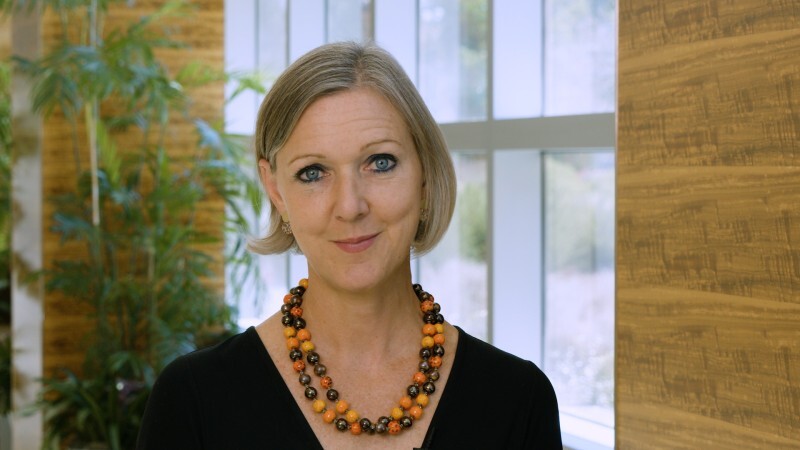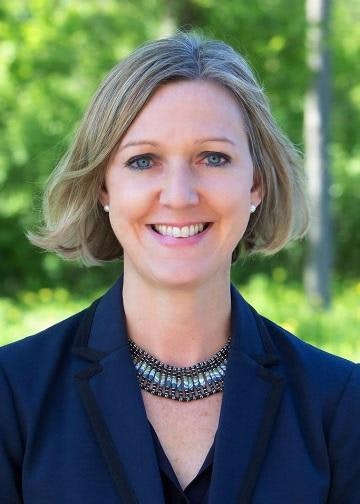
CalSTRS’Jenkinson on political headwinds and investing in hybrid climate solutions
Sitting down with Aysha Gilmore, Kirsty Jenkinson talks about the significant role private markets will play in transitioning the $334.8bn CalSTRS pension fund to net zero
“We are laser-focused on scaling up our private markets portfolio, so others can say ‘ah, this is how you invest in climate solutions’,” says Kirsty Jenkinson, the investment director for the Sustainable Investment and Stewardship Strategies (SISS) team at the second largest pension fund in the US.
The California State Teachers’ Retirement System (CalSTRS), a $334.8bn hybrid retirement scheme consisting of both defined benefit and defined contribution plans, has pledged to achieve net zero emissions by 2050 or sooner.
Sitting down with Net Zero Investor, Jenkinson explains that CalSTRS has “three pillars” to achieving this pledge: measuring and reducing portfolio emissions; investing in climate solutions; and corporate engagement.
A key focus for the pension fund in 2024 is to “accelerate those investments [in climate solutions], really focusing on private markets because that is where there is more opportunity”, Jenkinson suggests.
“Our thesis is: the world needs more innovation in terms of how we finance the net zero transition, but it also needs scale, and we can offer both. So, we’ve deliberately structured the SISS portfolio to allow us to pick the innovation, but also scale it.”
Nobody’s got a perfect plan of how to do net zero, so all we can do is figure out the best and smartest ways to do it

$2bn climate solutions
Currently, CalSTRS’ SISS portfolio invests in both public and private markets but has been allocated 1% of the fund, which is around $3bn, to invest solely in climate solutions offered on the unlisted market.
“We have committed about $2bn of this total allocation,” Jenkinson says, with a “pretty aggressive pipeline to grow it even further, rising to 2% of the total fund over the next six years”.
However, rather than just focusing on “traditional” climate solutions such as energy transition infrastructure, CalSTRS has chosen to dedicate half of its private markets’ allocation to venture capital (20%) and to what Jenkinson calls “hybrid” solutions (30%).
“There are a lot of climate solutions that don't fit neatly into a private equity mandate and they don't fit neatly into an infrastructure mandate -they need flexible capital. So, they need asset allocators like us to give them capital that might be part debt, part equity or part investment in a company, it’s really hybrid,” Jenkinson explains.
Examples of “hybrid” investments include US sustainable infrastructure solutions provider Generate Capital and Just Climate, which tackles decarbonising hard-to-abate solutions through financing solutions such as green steel.
CalSTRS has also expanded into venture capital, investing among others in US-based climate tech One Ventures and G2 Venture Partners.
We're seeing some of the most significant boosts to scale in alternative energy in some of the states that politically have a very different view when it comes to talking about climate change

IRA ‘unlocking’ investment
Private markets investing has been a topic of debate in the US, with questions being raised around the impact of private equity and venture capital investments on economic growth and investor returns. The lack of transparency on carbon emissions can add to the reluctance among asset owners to invest in the space.
However, for asset owners in the US, policy such as the Inflation Reduction Act (IRA) incentivise investments in climate solutions. But has it changed the game?
Jenkinson explains that the IRA has made “something that looked good, look even better now, really helping to unlock a lot of new investments”.
Paradoxically, this has played out especially in states such as Texas, where politicians are moving to punish investors signing up to net zero pledges.
While Republican politicians are pounding big banks and investment managers for being “too woke” or “hostile” to fossil fuels, their states are also benefiting from investments in renewables.
“We're seeing some of the most significant boosts to scale in alternative energy in some of the states that politically have a very different view when it comes to talking about climate change,” Jenkinson remarks.
“If you look at the amount of investment going into Texas and Oklahoma around this [climate solutions] and boosted by the IRA, it's really, really profound.
“That's exciting because it means that when you look at unit economics, when you look at just good business, actually the politics goes away, and you can just do good investing.”
Political headwinds
However, the next US election is expected in November 2024, with Donald Trump leading polls against president Joe Biden in four key swing states. This is despite Biden gaining some ground against the former president in six of the seven crucial states over the last week.
The possibility of Trump being re-elected and his inconsistent attitude towards climate change has caused some in the sector to question whether the IRA will survive under his potential presidency, but Jenkinson expresses that investors shouldn’t get lost in the “noise” of this.
“I'm not sure that any of the underlying opportunities that we're seeing are going to change because this is about unit economics, total addressable markets and other drivers of investment performance, which ultimately, are going to be a lot more ambivalent to whoever's in the office.
“But don't get me wrong. There's an awful lot swirling around that you can get very distracted and very focused on and that's challenging,” Jenkinson adds.
Liquidity risk
Having said that, the changing macroeconomic conditions could become a challenge to private market investments, Jenkinson acknowledges. This is why CalSTRS remains conscious of managing liquidity risks in private markets, Jenkinson explains.
“In the current environment, when we invest in private markets, we have to ensure that we have maximum liquidity to see us through any potential market downturn,” she says.
To navigate potentially higher costs associated with private markets investing, Jenkinson explains that CalSTRS is trying to gain access to climate solutions through co-investments as opposed to fund investments.
However, despite CalSTRS making significant allocations to climate solutions, there are some assets within the class that the pension fund has chosen not to invest in.
“There's a big discussion at the moment around direct air capture as to whether that’s ever going to be economical at scale. That's one where I have some concerns right now,” Jenkinson explains.
Carbon capture is also an area where there are questions around scale and how it will be economical, Jenkinson added.
2024 will bring new challenges for the Californian pension fund, with CalSTRS CIO Christopher Ailman set to retire this summer and the political landscape in the US potentially undergoing a major overhaul.
But despite these changes, Jenkinson stresses that tackling climate change will remain a key focus for the fund: “Nobody’s got a perfect plan of how to do net zero, so all we can do is figure out the best and smartest ways to do it.”




